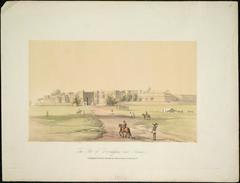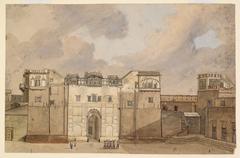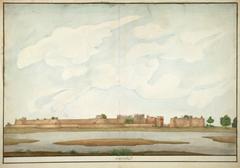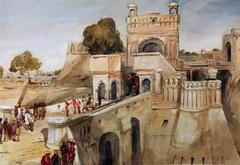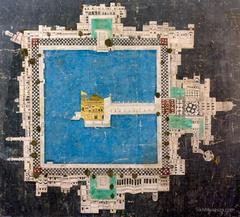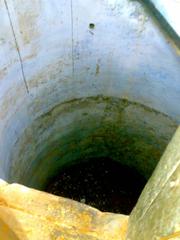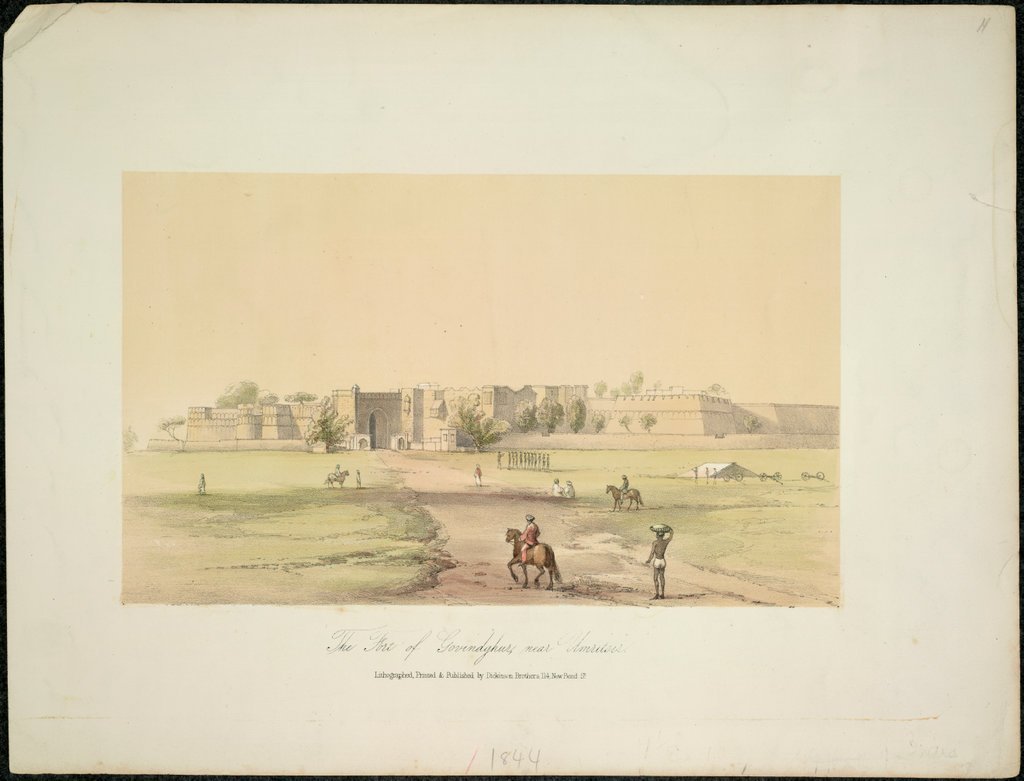
Gobindgarh Fort Visiting Guide
Date: 17/07/2024
Introduction
Gobindgarh Fort, situated in the heart of Amritsar, Punjab, India, is a historical monument with a legacy spanning over 250 years. This iconic structure is not just a fort but a testament to the rich heritage and cultural tapestry of the region. Originally built in the mid-18th century by Gujjar Singh Bhangi, a local chieftain, the fort underwent significant transformations under the aegis of Maharaja Ranjit Singh, the founder of the Sikh Empire (Discover Gobindgarh Fort). Maharaja Ranjit Singh envisioned the fort as a symbol of Sikh power and resilience, and it played a crucial role in the administration and military prowess of his empire. Over the years, the fort has seen various phases of history, including British annexation and its use as a military base post-Indian independence. Today, Gobindgarh Fort stands as a vibrant cultural hub, meticulously restored and offering a plethora of attractions and experiences for visitors. From the immersive 7D show that brings to life the valor of Maharaja Ranjit Singh to the bustling Haat Bazaar offering traditional handicrafts, the fort promises an enriching experience for history enthusiasts and casual visitors alike. The fort is open daily from 10:00 AM to 10:00 PM, and it is advisable to check the official website for any updates on visiting hours and ticket prices.
Table of Contents
- [Historical Background and Significance](#historical-background-and-significancehistorical-background-and-significance)
- [Early Beginnings - From Mud Fortress to Bhangi Misl Stronghold](#early-beginnings---from-mud-fortress-to-bhangi-misl-strongholdearly-beginnings---from-mud-fortress-to-bhangi-misl-stronghold)
- [Maharaja Ranjit Singh’s Transformation](#maharaja-ranjit-singhs-transformationmaharaja-ranjit-singhs-transformation)
- [The British Era](#the-british-erathe-british-era)
- [Post-Independence Transformation](#post-independence-transformationpost-independence-transformation)
- [Visitor Information](#visitor-informationvisitor-information)
- [Visiting Hours](#visiting-hoursvisiting-hours)
- [Tickets](#ticketstickets)
- [Travel Tips](#travel-tipstravel-tips)
- [Nearby Attractions](#nearby-attractionsnearby-attractions)
- [Unique Aspects and Events](#unique-aspects-and-eventsunique-aspects-and-events)
- [Conclusion](#conclusionconclusion)
- [FAQ](#faqfaq)
- [References](#referencesreferences)
Historical Background and Significance
Early Beginnings - From Mud Fortress to Bhangi Misl Stronghold
The fort’s origins can be traced back to the mid-18th century, a period marked by political upheaval and the rise of Sikh confederacies known as “Misls.” Around 1760, a small mud fort was erected on the site by Gujjar Singh Bhangi, a local chieftain belonging to the powerful Bhangi Misl. This initial structure, though modest, served as a strategic outpost in the turbulent times.
Maharaja Ranjit Singh’s Transformation
The fort’s destiny took a significant turn with the emergence of Maharaja Ranjit Singh, the legendary founder of the Sikh Empire. In 1805, after conquering Amritsar, Maharaja Ranjit Singh recognized the strategic importance of the fort and decided to rebuild and fortify it. Over the next four years, the mud structure underwent a remarkable transformation, evolving into a formidable brick and lime bastion. Under his reign (1801-1839), the fort flourished as a center of administration, military power, and cultural influence. It housed the famed “Toshakhana” (royal treasury), which held the Koh-i-Noor diamond for a period, along with other valuable artifacts and treasures.
The British Era
Following Maharaja Ranjit Singh’s death and the subsequent decline of the Sikh Empire, the British East India Company annexed Punjab in 1849. Gobindgarh Fort, a potent symbol of Sikh sovereignty, was seized by the British and renamed “Fort Govindgarh.” Under British rule, the fort was primarily used as a military garrison. Significant structural changes were implemented to suit their needs, including the addition of barracks, armories, and a clock tower. Despite these alterations, the fort remained a poignant reminder of the lost Sikh kingdom for the local populace.
Post-Independence Transformation
After India’s independence in 1947, Gobindgarh Fort continued to serve as a military base for the Indian Army. However, recognizing its historical and cultural significance, the army handed over the fort to the Punjab government in 2008. This transfer marked a new chapter in the fort’s long history. The Punjab government, in collaboration with various organizations, embarked on an ambitious project to conserve and restore the fort, aiming to transform it into a vibrant cultural and tourist destination.
Visitor Information
Visiting Hours
Gobindgarh Fort is open to visitors from 10:00 AM to 10:00 PM every day. It is advisable to check the official website for any changes in timings before planning your visit.
Tickets
Ticket prices for Gobindgarh Fort are as follows:
- Adults: INR 180
- Children (5-12 years): INR 100
- Senior Citizens: INR 150
Special discounts may be available for groups and school visits. Tickets can be purchased online through the official website or at the entrance.
Travel Tips
- The best time to visit is during the cooler months from October to March.
- Wear comfortable walking shoes as there is a lot to explore within the fort.
- Guided tours are available and highly recommended for a more comprehensive understanding of the fort’s history.
Nearby Attractions
While visiting Gobindgarh Fort, consider exploring other nearby attractions such as:
Unique Aspects and Events
Gobindgarh Fort offers several unique experiences:
- Daily Flag Lowering Ceremony: A display of military tradition and respect.
- Toshakhana: Showcasing a replica of the Koh-i-Noor diamond and other artifacts.
- Interactive Exhibits: Bringing the fort’s history to life with modern technology.
- Special Events: The fort hosts various cultural events, performances, and light and sound shows throughout the year.
Conclusion
Gobindgarh Fort is more than just a historical monument; it is a living testament to the resilience and grandeur of Sikh architecture and history. From its humble beginnings as a mud fort to its transformation into a formidable bastion under Maharaja Ranjit Singh, and its subsequent roles under British and Indian governance, the fort encapsulates the rich and tumultuous history of the region. Today, meticulously restored, it serves as a vibrant cultural hub offering a range of engaging experiences, from historical exhibits to live performances and culinary delights. Visitors can not only immerse themselves in the fort’s storied past but also enjoy the various modern attractions and facilities it offers. The fort’s strategic location in Amritsar also makes it a perfect starting point to explore other significant landmarks like the Golden Temple, Jallianwala Bagh, and the Partition Museum. For those planning to visit, it is recommended to wear comfortable walking shoes, stay hydrated, and consider guided tours for a comprehensive understanding of the fort’s rich history. Gobindgarh Fort stands as a beacon of Sikh heritage and a must-visit destination for anyone traveling to Amritsar (source).
FAQ
Q1: What are the visiting hours of Gobindgarh Fort? A1: Gobindgarh Fort is open from 10:00 AM to 10:00 PM every day.
Q2: How much are the tickets for Gobindgarh Fort? A2: Ticket prices are INR 180 for adults, INR 100 for children (5-12 years), and INR 150 for senior citizens.
Q3: Are guided tours available at Gobindgarh Fort? A3: Yes, guided tours are available and highly recommended to fully appreciate the fort’s history.
Q4: What other attractions can I visit near Gobindgarh Fort? A4: Nearby attractions include the Golden Temple, Jallianwala Bagh, Partition Museum, and Durgiana Temple.
